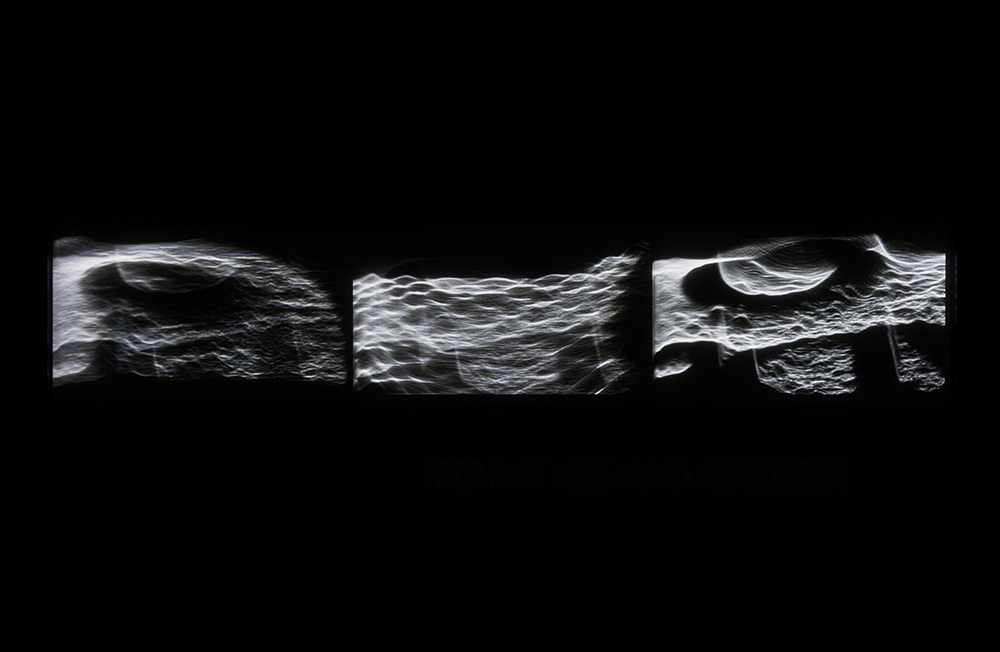Description
Point of No Return
Point of No Return is an abstract audiovisual piece that celebrates the line, its quality, and its movements.
Artist Residency
Signal Culture, Owego, NY
Solo Exhibition
Media Wall
Fitchburg State University,
Fitchburg, MA
July, 2016
Response to Wenhua Shi’s Point of No Return
Shayna Connelly, MFA
Assistant Professor of Digital Cinema
School of Cinematic Arts
DePaul University
Point of No Return is a beautiful and engaging reflection on the myriad ways the familiar can be rendered abstract.
By using only a few select elements such as luminance values, movement and digital distortion to create cohesion, a hypnotic effect is created and periodically interrupted when the rhythms threaten to lull us into complacency. This hypnotic-yet-agitating effect creates an engaging experience and asks us to look deeper at the structure of a line. The film obscures where we are spatially in relation to the line and exposing the uncanniness in the digital realm.
The film’s initial lines create landscapes that are at once familiar and distorted. Tension is created trying to concretize the images and situate them within a recognizable context and scale. These ‘landscapes’ are simultaneously infinite and microscopic.
Digital has expanded our concept of space and opened up an unexplored frontier. The signals creating the lines we see onscreen are aspects of the future existing in our present. Like dreams they are an aspect of human experience but exist somewhere we cannot physically access.
Our lack of access is emphasized in the segment of the soundtrack containing voices, where the microscopic/macroscopic view makes way for a type of dance where the lines move organically. Despite its clearly digital frames of reference, natural elements determine the line’s movements. Keeping the voices low in the mix invites us to pay closer attention. The voices are human, but the language is unknown. It is here, along with the visual link to human movement, where the alienation of being in a foreign place comes into play. This point of no return marks the traveler’s initiation to a new environment with rules that are apparent yet inaccessible. Sound and image give the illusion that enlightenment is possible yet it remains elusive.
Because organic shapes, movements and sounds form the basis for the line’s digital distortions the film seems to engage us in conversation about how we view the world through technology and how we evaluate technology’s role in our perceptions. It is not a condemnation of the new, rather a forward-thinking portrait of a changed landscape. The film invites us to ponder the line, something that constructs our world but which we constantly take for granted. Technology embodies a vaguely supernatural force teasing us with revelations just out of our reach.
Point of No Return asks us to consider the simple and familiar within a changed landscape. It acknowledges that we can no longer return to the days of analog, but debunks the notion that he digital realm is inaccessible. It has become an integral part of our lives and we must think of ourselves as travelers in a foreign land, seeking to understand the rules of this new world while balancing integration and preservation. Above all it reminds us there is no turning back from this frontier and we must embrace the beauty in abstraction and remember our fear of the unknown is linked to feelings of awe.
